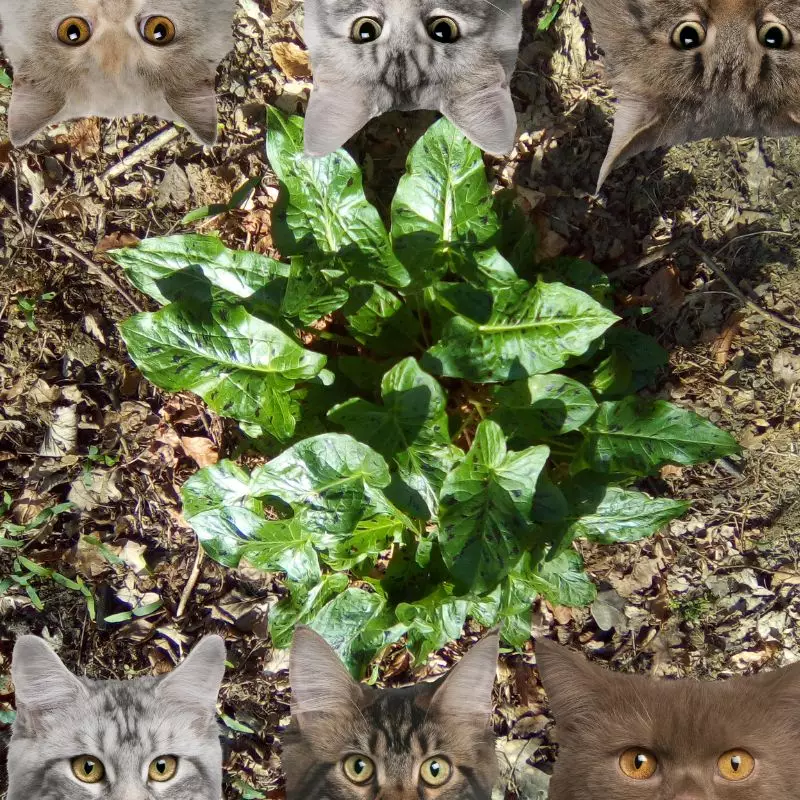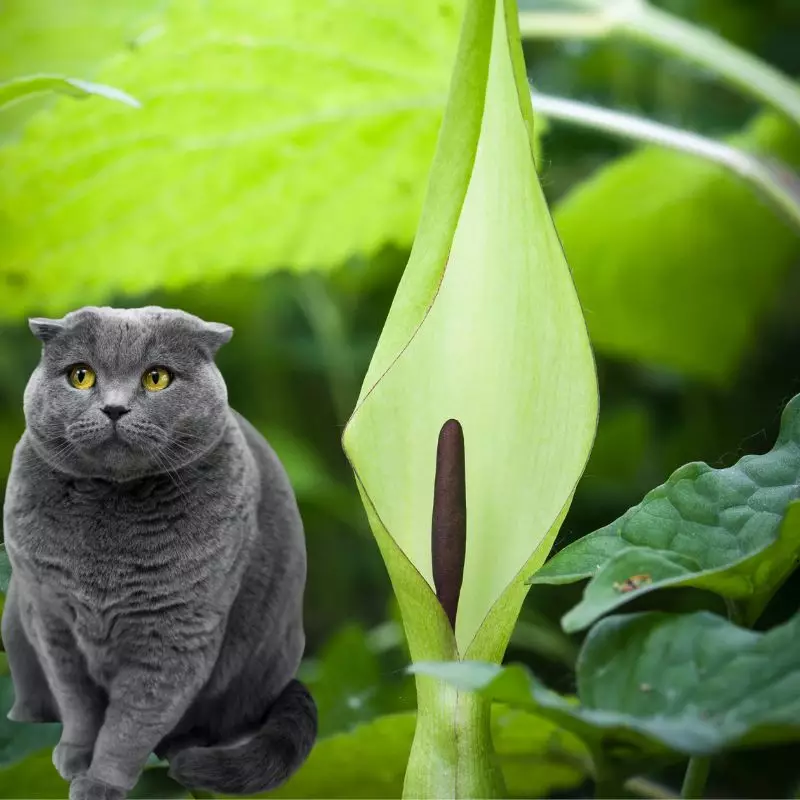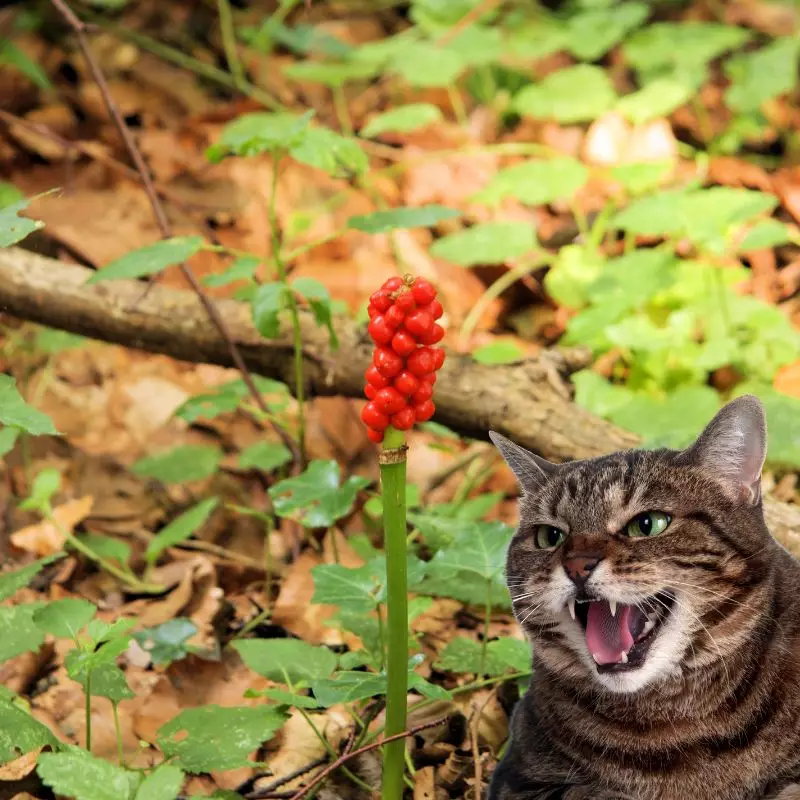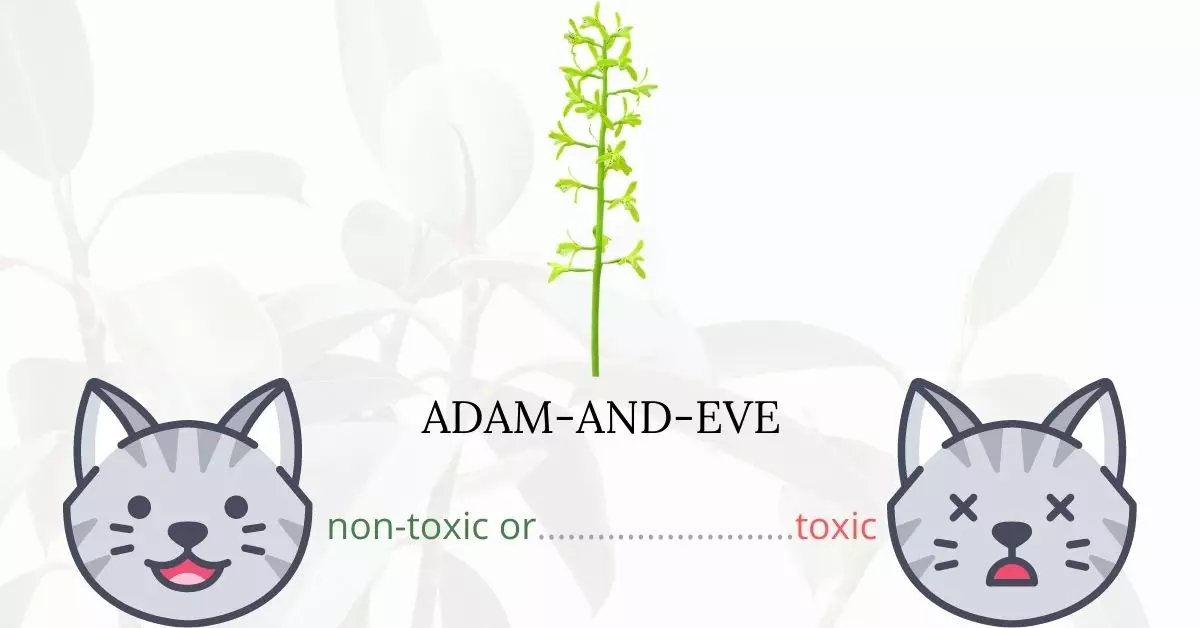Yes, the Adam-and-Eve plant is toxic to cats. Commonly recognized by various names such as the Cuckoo plant, Bobbins, Starch Root, Putty Root, Wake Robin, Lord-and-Ladies, and Arum, this plant contains substances called raphides. These are needle-like crystals of calcium oxalate combined with oxalic acid. When ingested, a cat’s saliva begins to break down these raphides, which can then penetrate the mouth and extend up to the upper digestive tract, causing potential harm.
This article has been crafted in collaboration with a team of experienced DVMs (doctors of veterinary medicine). With their expertise, we have compiled accurate and up-to-date information regarding the risks of various plants, with a focus on the Adam-and-Eve plant in this context. Our thorough research also includes insights from high-authority websites like ASPCA and PetMD to ensure comprehensive coverage on the topic.
Clinical Signs of Adam-and-Eve Plant Poisoning in Cats

When a cat comes into contact with or consumes the Adam-and-Eve plant, various clinical signs may become apparent due to the toxic substances present in the plant. Here’s a breakdown of the symptoms and their causes:
- Mouth Irritation: This immediate response occurs due to the raphides (needle-like calcium oxalate crystals) present in the plant. When chewed or bitten, these crystals can puncture the soft tissues of the mouth, leading to pain and discomfort. This irritation might manifest within moments or take up to two hours post-ingestion to display.
- Choking: The irritation and discomfort in the mouth can cause the cat to gag or choke as a reflexive response to the foreign, irritating substance.
- Drooling: As the mouth becomes irritated, the cat might produce excessive saliva in an attempt to flush out the offending substance and alleviate the discomfort.
- Dysphagia (Difficulty Swallowing): The inflammation and irritation in the mouth and throat can hinder the normal swallowing mechanism, leading to difficulty when the cat tries to swallow.
- Dyspnea (Shortness of Breath): In more severe cases, if any particles of the plant get inhaled instead of ingested, it could lead to respiratory distress or obstruction, causing difficulty in breathing.
- Digestive Upset or Diarrhea: Once ingested, the toxic components of the plant can irritate the gastrointestinal tract, leading to digestive disturbances such as diarrhea.
- Renal Failure: The toxic substances in the plant can have a detrimental effect on the kidneys if ingested in significant amounts. This can result in renal dysfunction or failure, which is life-threatening.
- Convulsions: In extreme cases, the poisoning can affect the nervous system, leading to seizures or convulsions as the body reacts to the toxic invasion.
- Coma: Severe poisoning can depress the central nervous system to a level where the cat becomes unresponsive and falls into a comatose state.
- Death: In the worst-case scenario, if the poisoning is not treated promptly and effectively, it can unfortunately lead to fatality.
It is crucial for cat owners to be aware of these signs and seek immediate veterinary care if they suspect their cat has come into contact with or consumed the Adam-and-Eve plant.
First Aid and Treatment

If you found that your feline has ingested Adam-and-Eve Plant, the first thing to do is to remove the remaining part of the plant from his or her mouth, if there are any. Seek help from a veterinarian if severe symptoms occur. It is vital to monitor the progress of symptoms as this may be fatal to your cat.
The veterinarian may use medication that will induce vomiting or give the cat an activated charcoal solution to bond with the harmful plant ingredient and then pass it through the body in feces. To help your cat get rid of toxins, the veterinarian will likely start him on IV fluids to replace the fluid loss in your cat’s body and to also aid in the removal of toxins.
Recovery of Adam-and-Eve Poisoning in Cats

Cats who survive Adam-and-Eve plant poisoning usually end up suffering from lifelong damage to the kidney and liver. Only immediate veterinary intervention can provide a positive outcome.
Prevention
Familiarize yourself with the plants in your neighborhood. If Adam-and-Eve is known to grow around your area, make sure your cat stays indoors most of the time. Keep your cats in good health by always providing supplementary food and snacks.
If you love plants but have cats at home, check out these lists:





